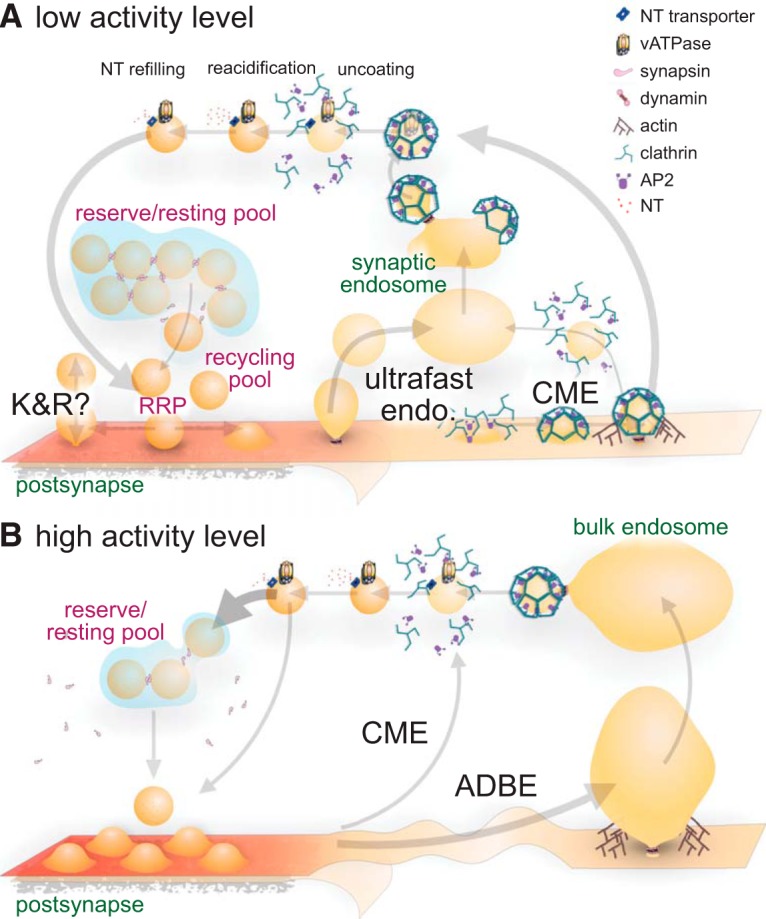Figure 2.

Modern view of the SV cycle. A, During low activity levels, SVs are recruited to the RRP from the reserve/resting pool and fuse at the active zone, after which they may be retrieved via one of several mechanisms: (1) the fusion pore may reclose by kiss-and-run, (2) ultrafast endocytosis at the periactive zone can retrieve endocytic vesicles that rapidly fuse with synaptic endosomes from which SVs regenerate in a clathrin-dependent manner, or (3) CME can generate SVs from the plasma membrane in certain circumstances, after which vesicle uncoating is necessary for the vATPase to acidify the lumen triggering concurrent neurotransmitter (NT) refilling by transporters. After refilling, SVs can be recruited back to the cluster, where they are segregated into functional pools. B, At high activity levels, many SVs are mobilized and exocytosed by full-collapse fusion. This activates ADBE, which retrieves large areas of membrane generating bulk endosomes from which SVs regenerate.
